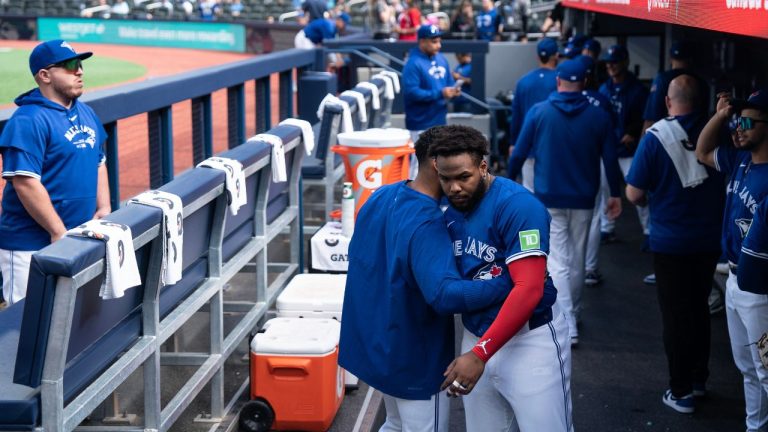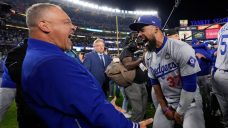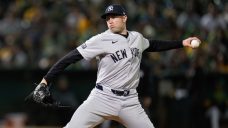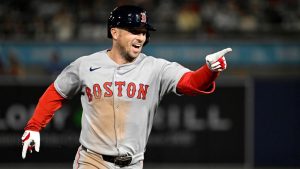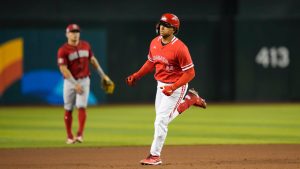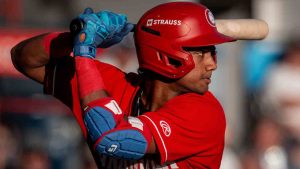TORONTO — Inside the champagne-soaked clubhouse at Dodger Stadium after Los Angeles beat the New York Mets in the National League Championship Series, Max Muncy made a comment that’s especially salient for the Toronto Blue Jays with the off-season underway.
“Every single team when they get to spring training, they have their meeting and they say, ‘Hey, our goal is to win a World Series this year,’” Muncy, amid the celebratory mayhem, told a small group of reporters. “We're one of the few teams where that's a realistic goal every single year. There's a lot of pressure, there are a lot of expectations, especially this year when you're talking about some of the names that we added. It definitely weighed heavy all year long. But we were able to fight through it.”
The Dodgers, thanks to a level of depth no club can match, fulfilled their goal Wednesday night and became deserving champions by rallying past the New York Yankees 7-6, taking the World Series in five games. And, Thursday, as they and the rest of baseball began racing for the 2025 title, Muncy’s point about how few teams can make annual championship contention a realistic goal underlined that the Blue Jays aren’t among them.
Right now, this is a team facing the end of the second cycle under the current front office of president and CEO Mark Shapiro and GM Ross Atkins.
The first ran from 2016-2019 and was inherited from the previous regime of Paul Beeston and Alex Anthopoulos, during which the Blue Jays made a second consecutive trip to the ALCS before the core aged out and was, in part, eventually sold off.
The second began in 2020 and runs to the present, built around a group that emerged from the preceding teardown and produced three wild-card berths and zero post-season wins.
With Shapiro, Vladimir Guerrero Jr. and Bo Bichette among the foundational pieces heading into a walk-season, and Atkins, Kevin Gausman and George Springer all up after the 2026 season, the Blue Jays are in limbo between seeing through the current group, and building for the next cycle, either a third for this front office or a first for another.
As such, every decision they make over the next few months carries deeper implications since it’s a pull in one direction or another.
A failure to sign Guerrero and/or Bichette to long-term deals, for instance, pushes the Blue Jays down the first road, leaving open the possibility of another deadline sell-off next summer as part of a deeper rebuild. An extension for one or both, on the other hand, locks in a pillar for the next cycle and if done well, would be accompanied by meaningful adds.
Looming large for the franchise is the Dec. 10 draft lottery, in which the Blue Jays, at 7.48 per cent, have the fifth-highest odds of landing the No. 1 pick in the 2025 draft.
No matter where they end up, they’ll have access to the best available talent and one of the bigger draft-bonus pools to work from, creating an opportunity to turbo-charge the farm system. Nailing it can help bridge from the current window to the next one without a major step backward.
All of which raises the stakes on the hiring of a new amateur scouting director to replace Shane Farrell, who left for a player-development role with the Detroit Tigers.
The Blue Jays’ recent drafting record needs a few more years to be fairly assessed, but that they haven’t integrated a homegrown position player since Alejandro Kirk in 2020 and starter since Alek Manoah in 2021 underlines how they simply haven’t produced enough talent internally.
Finding someone to correct that is further complicated by external candidates being weary of joining a front office with so little visible runway, another way the limbo between cycles impacts the organization.
Two key hirings already in place are David Popkins, who takes over as hitting coach, and Justin Lehr, hired to the newly created role of director of pitching, overseeing the player-development side.
Coaching staff vacancies still in need of filling include a new bullpen coach to replace Jeff Ware and a new field coordinator to cover for Gil Kim, while assistant pitching coach David Howell was being considered for re-assignment.
Then, of course, there’s the roster. And as the Blue Jays’ 74-88 finish suggests, there are significant holes to fill.
FanGraphs’ RosterResource currently projects the Blue Jays at a CBT payroll of $199.4 million factoring in the $115 million in guarantees to seven players plus arbitration projections for 10 players, led by Guerrero at an estimated $29.6 million.
During his end-of-season media availability on Oct. 2, Shapiro said he didn’t see the payroll “either growing or decreasing in a big way,” which suggests the Blue Jays could end up in the $230-$240 million range again.
In other words, they have money to work with.
That should give them the space to add an impact bat, a lesser but productive hitter and a mid-range leverage reliever. Closer Jordan Romano is projected to make $7.75 million in arbitration but if his status after elbow surgery is too uncertain, he could be non-tendered to create additional spending room.
The return from last summer’s deadline sell-off, while not altering the franchise’s trajectory, gives the Blue Jays more assets to work with on the trade market, although both system and 40-man roster depth remain glaring organizational issues.
All of which brings us back to Muncy’s point, about how every team talks about winning a World Series in the spring, but for how few of them it’s actually a legitimate and sustainable aspiration.
The Blue Jays, no matter how you cut it, simply aren’t anywhere close, the road they’re on is about to end and the time for them to choose a direction is nigh.
